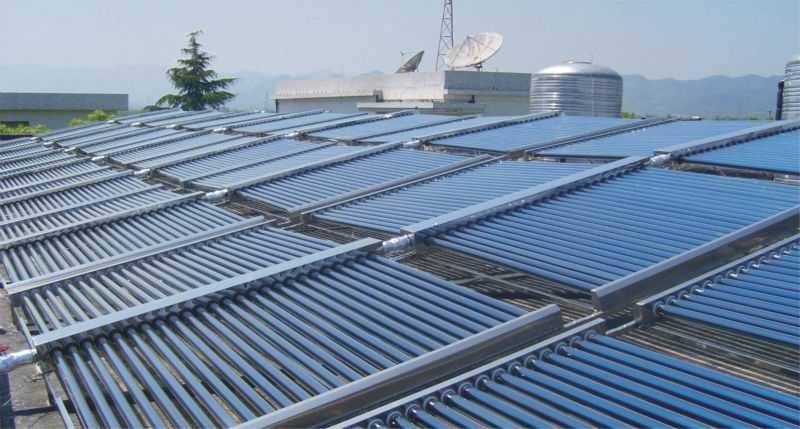Reliance on Natural Gas for Residential Water Heating
Inexpensive natural gas and the historical subsidization of its use as a source of thermal energy has led Southern California to depend heavily on natural gas for residential heating. As of 2009, approximately 90% of residences are equipped with natural gas water heaters statewide. Among the end uses of natural gas, water heating is also the single most energy intensive in most homes, with approximately half of all residential natural gas deliveries being used to heat water for domestic purposes. Progressive reduction of greenhouse gas emissions from the residential housing sector necessitates that some sort of alternative source of thermal energy be used to displace or supplement natural gas for the purpose of heating water.
Case Studies for Community Scale Solar Water Heating in Los Angeles County
Reducing the carbon intensity of water heating requires substitution towards renewable sources of thermal energy. This study assesses the feasibility and potential energy savings of one novel renewable approach: community scale solar water heating systems. While most extant solar thermal systems serve a single residence, community scale systems are designed to serve the needs of tens to hundreds of residences and displace a greater fraction of the natural gas that would otherwise be required for water heating than individual systems. Using Los Angeles County as a geographic and political context, the performance and energy savings of community scale solar water heating systems are evaluated through a series of six case studies and system simulations.
Primary Findings
Community scale solar water heating systems consistent with prevailing design practice, incentive program, and Title 24 performance requirements exhibited a wide range of performances (20-90% solar fraction). The amount of roof space available for collector panels, the hot water demand, and the population density of residential structures proved to be the most influential variables with regard to system performance. In all but the most densely populated case, it was possible to design community scale solar thermal systems that did not require exemption from Title 24 energy efficiency building code requirements.
The case studies also revealed that different types of property owners have very different decision landscapes vis-à-vis community scale solar water heating. Community scale solar thermal systems are most easily financed and adopted by private property owners, who can claim both state and federal incentives to offset capital costs. Private nonprofit property owners cannot qualify for federal incentives, due to the structure of those applicable. The public property owners studied, namely public housing authorities, have the hardest time of all, as they must bear the costs of consulting and monitoring studies required by the Department of Housing and Urban Development.
Community scale solar thermal can be used as an emissions reduction technology for the residential housing sector, but further study is necessary to determine the type of residential developments best suited to it. Side-by-side comparison with other renewable thermal technologies, like heat pump-PV, is also necessary to create a procedure for the displacement of natural gas for residential water heating.
Poster presented by Robert Cudd at American Solar Energy Society Solar Conference 2018. Energy_Savings_Feasibility_Poster_2018
Draft Final Report – Evaluating Energy Savings from CSSWHS in LA County
Draft_Methodology_Report_Final

